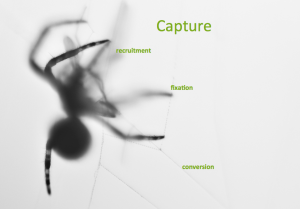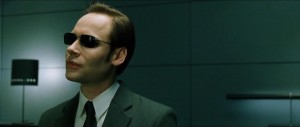 When I was in graduate school in STS we read Langdon Winner’s Do Artifacts Have Politics, an excerpt from his book, The Whale and The Reactor. If you’re not familiar with it, the piece is often remembered for its analysis of bridges, or more accurately overpasses along the way to Jones Beach NY. Langdon’s telling of it, notes that the bridges were built too low for public transportation (buses) to pass and, in so being, fixed in material artifice the divides and inequalities of class and race. It turns out that Prof. Winner was wrong about the height of those overpasses, buses could indeed get through but I believe not wrong about the implications of architecture, of technology, which the example was meant to illustrate.
When I was in graduate school in STS we read Langdon Winner’s Do Artifacts Have Politics, an excerpt from his book, The Whale and The Reactor. If you’re not familiar with it, the piece is often remembered for its analysis of bridges, or more accurately overpasses along the way to Jones Beach NY. Langdon’s telling of it, notes that the bridges were built too low for public transportation (buses) to pass and, in so being, fixed in material artifice the divides and inequalities of class and race. It turns out that Prof. Winner was wrong about the height of those overpasses, buses could indeed get through but I believe not wrong about the implications of architecture, of technology, which the example was meant to illustrate.
The often not remembered portion of that excerpt deals with nuclear power or other technological systems and their adoption by society. In reflecting on nuclear power, Winner suggested that some technologies not only represent or reproduce power relations (as in the example of the overpasses) but also necessitate a particular political arrangement. That their “externalities” require a re-configuration of social order without which such a technological system could not effectively be sustained. So the bridges pointed to the power of technology to fix and reproduce a particular social order and nuclear power the capacity for a technological system to cause a reconfiguration of social order or social practice. For arguments sake, I’d like to advance these 2 somewhat deterministic positions balancing them off with an examination of the interplay between technology and social practice. I bring to you reflections on social web architectures that are, on the one hand rooted in the determinism of bridges (which were ultimately tall enough, but social architecture nonetheless) and on the other, rooted in a limited social constructivist perspective that while acknowledging agency recognizes the limits upon it. Ultimately I want to advocate here critical engagement with social media platforms. A questioning of technology that transcends the exuberance to upload first and ask questions later. I’m not calling for revolution but rather evolution in our approach to social media. An approach that recognizes its multiple purposes, that judiciously engages them and that advocates for mindful grappling with their affordances and their ideology. All at the same time.
For arguments sake, I’d like to advance these 2 somewhat deterministic positions balancing them off with an examination of the interplay between technology and social practice. I bring to you reflections on social web architectures that are, on the one hand rooted in the determinism of bridges (which were ultimately tall enough, but social architecture nonetheless) and on the other, rooted in a limited social constructivist perspective that while acknowledging agency recognizes the limits upon it. Ultimately I want to advocate here critical engagement with social media platforms. A questioning of technology that transcends the exuberance to upload first and ask questions later. I’m not calling for revolution but rather evolution in our approach to social media. An approach that recognizes its multiple purposes, that judiciously engages them and that advocates for mindful grappling with their affordances and their ideology. All at the same time.
 Before diving in, I’d like to state the obvious: Facebook does not exist to make us all better friends. Twitter doesn’t buzz our cell phones so that social movements may find a ready media outlet in repressive regimes. Google isn’t doing evil because it’s a nice thing to do. YouTube isn’t really about “you.” These platforms, through their technological features, may allow many practices for users, but market logic has shown one constant since the internet became a driver in modern economies: That once investors transcend their exuberance, they will look for profit. And if any for-profit venture wishes to survive past its IPO, it eventually better provide it through an effective business model. As I see it that model is rooted in capture and conversation.
Before diving in, I’d like to state the obvious: Facebook does not exist to make us all better friends. Twitter doesn’t buzz our cell phones so that social movements may find a ready media outlet in repressive regimes. Google isn’t doing evil because it’s a nice thing to do. YouTube isn’t really about “you.” These platforms, through their technological features, may allow many practices for users, but market logic has shown one constant since the internet became a driver in modern economies: That once investors transcend their exuberance, they will look for profit. And if any for-profit venture wishes to survive past its IPO, it eventually better provide it through an effective business model. As I see it that model is rooted in capture and conversation.
 I propose that social media (things like FB, Twitter, YouTube, etc.) and their attendant features, surrogates, and agents fix social practice in medium and thus serve as capture platforms. Capture involves 1) recruitment through invitation, coercion or conscription of cultural production, 2) fixation of that production (as processes or object) and 3) conversion of that which is fixed into value of some sort or another. Features can include things like status update boxes, “like” buttons, comment boxes, storage systems, and connections to other capture systems. Things like cell phones, cell phone towers, cameras, wi-fi networks are features by extension of the capture platform. They act as surrogates when they capture passively (location based services, for example) but take the form of agents when people function as the key operatives in the capture system.
I propose that social media (things like FB, Twitter, YouTube, etc.) and their attendant features, surrogates, and agents fix social practice in medium and thus serve as capture platforms. Capture involves 1) recruitment through invitation, coercion or conscription of cultural production, 2) fixation of that production (as processes or object) and 3) conversion of that which is fixed into value of some sort or another. Features can include things like status update boxes, “like” buttons, comment boxes, storage systems, and connections to other capture systems. Things like cell phones, cell phone towers, cameras, wi-fi networks are features by extension of the capture platform. They act as surrogates when they capture passively (location based services, for example) but take the form of agents when people function as the key operatives in the capture system.
Much like Morpheus said to Neo in the movie The Matrix, I say to you: any one can be an agent. The fact is that we move through spheres of capture (surveillance nets, yes) but also frames. Like a painting in Harry Potter’s Hogwarts, what is captured is not still or static but action and process. And what the captured means is open to the machinations of algorithm. Admittedly this might be read as a dystopic perspective. Capture serves a host of purposes, but here I focus on those elements of capture that tilt toward political economy and so remain skeptical and critical.
 By capturing the sociocultural, social media platforms create a political economy of self, of community and of social processes. Cultural production here is not only seen as the rendering of pop culture or high culture but also of our selves as cultural artifacts. Social web platforms use capture as the central means for building inventory. They invite us to contribute and then collect our tweets, pictures, random thoughts, location, names, birthdays, videos, queries, etc. We are their inventory. Like no other facet of the web experience, they make evident what has always been functionally present on the internet, a sort of celestial capture card, recording everything and storing it on a system of networked technologies with near infinite capacity. The implications are widespread. Capture platforms have the capacity to engulf in their calculus the willing and unwilling, our privacy, our creativity and our friends and communities. I want to make clear that my view of social web platforms is not monolithic. We do not live life in the web; we live not in but through it. Capture is more a feature of some platforms than others and a function of networks of platforms and technological systems not only the function of one.
By capturing the sociocultural, social media platforms create a political economy of self, of community and of social processes. Cultural production here is not only seen as the rendering of pop culture or high culture but also of our selves as cultural artifacts. Social web platforms use capture as the central means for building inventory. They invite us to contribute and then collect our tweets, pictures, random thoughts, location, names, birthdays, videos, queries, etc. We are their inventory. Like no other facet of the web experience, they make evident what has always been functionally present on the internet, a sort of celestial capture card, recording everything and storing it on a system of networked technologies with near infinite capacity. The implications are widespread. Capture platforms have the capacity to engulf in their calculus the willing and unwilling, our privacy, our creativity and our friends and communities. I want to make clear that my view of social web platforms is not monolithic. We do not live life in the web; we live not in but through it. Capture is more a feature of some platforms than others and a function of networks of platforms and technological systems not only the function of one.
![]() Not too long ago, I sat with friends at a conference catching up and joking around. I made a joke and my friend, thinking it funny tweeted it. It was the first time something I had said in the context of face to face oral communication was ever tweeted. It was a quip made offhandedly at a conference I love and have attended every year since 2001. I was mortified not only because it had been broadcast to the conference hash tag but because in a twist of irony, I would be asked to be the conference chair the very next day.
Not too long ago, I sat with friends at a conference catching up and joking around. I made a joke and my friend, thinking it funny tweeted it. It was the first time something I had said in the context of face to face oral communication was ever tweeted. It was a quip made offhandedly at a conference I love and have attended every year since 2001. I was mortified not only because it had been broadcast to the conference hash tag but because in a twist of irony, I would be asked to be the conference chair the very next day.  My tweeting friend has over 1200 followers. “Great!”, I thought, “the matrix has me.” Then looking at my friend thought, “and you are its agent.” Don’t worry we’re still friends. Reflecting on that moment I wondered “was I invited to participate or recruited through the pervasiveness of networked social practice?” How was she an agent of this system and where was my agency in it?
My tweeting friend has over 1200 followers. “Great!”, I thought, “the matrix has me.” Then looking at my friend thought, “and you are its agent.” Don’t worry we’re still friends. Reflecting on that moment I wondered “was I invited to participate or recruited through the pervasiveness of networked social practice?” How was she an agent of this system and where was my agency in it?